Bumblefoot is one of those backyard chicken diseases that’s pretty simple to understand and treat, although it definitely requires some first aid.
We’ve dealt with it a few times on our farm and it’s always been easily treatable. Interestingly, I’ve noticed it always seems to start on the left foot first. I don’t know if that’s been every chicken owner’s experience though. They say animals, like people, are either right or left-handed. I’ve always wondered if that has something to do with it.
There’s a lot of information you’ll find on the Internet that makes bumblefoot out to be a huge, serious “life or death situation.”
Now, don’t get me wrong – any infection can turn into a life or death situation if not treated, and since chickens usually don’t let on about how sick they are until it’s too late, it’s safe to say that if you suspect your backyard chickens have bumblefoot, then you need to take care of it.
But as for bumblefoot being immediately life threatening…..well, we have not experienced that on our farm.
Like any disease out there, bumblefoot can affect your chickens at any time and any age, but particularly if they have a depressed immune system, if they’re very young or very old, or have any sort of condition that could potentially make the immune system not as strong as it would be, then they run a higher risk of bumblefoot becoming a bigger issue.
For healthy chickens, however, it might not be the huge issue you may have been led to believe.
In this article, we’ll cut through the drama, and talk about what bumblefoot is, why it needs to be treated, treatment options (natural and pharmaceutical), and how you should approach this common backyard chicken issue.
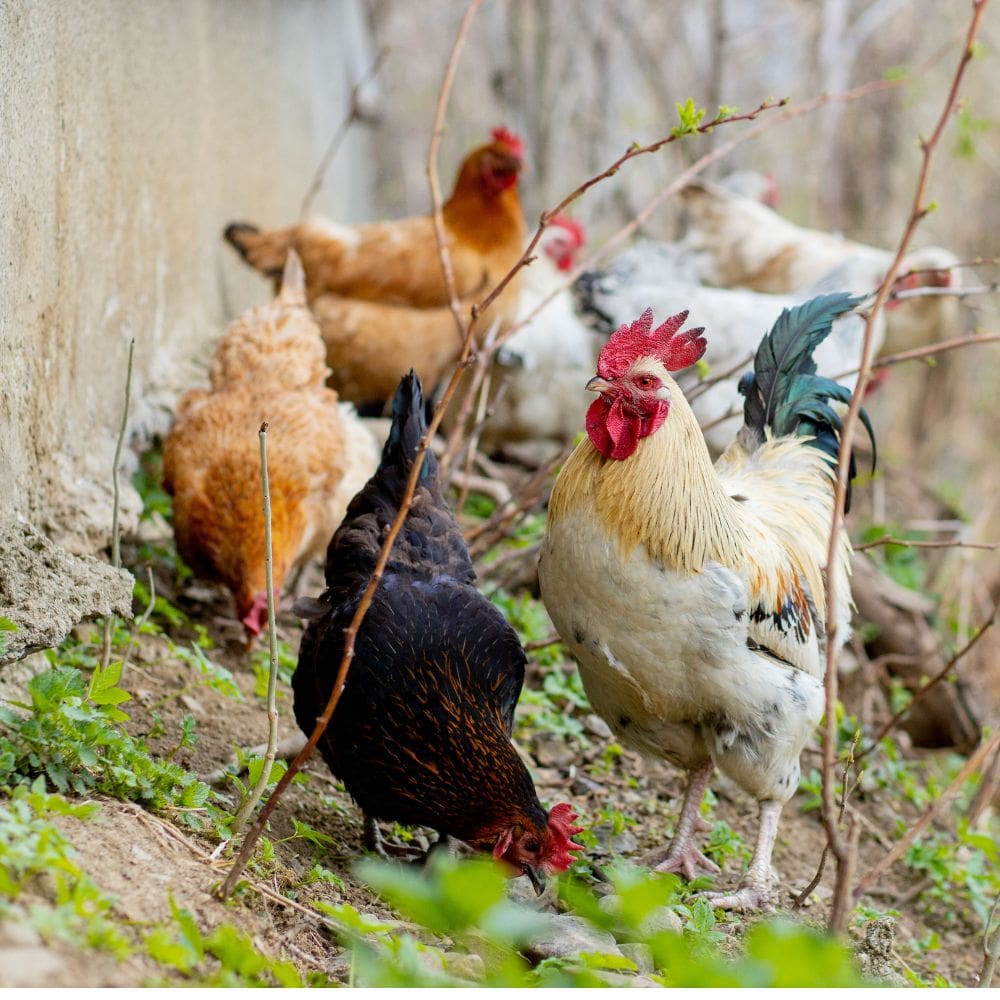
Table of Contents (Quickly Jump To Information)
What is bumblefoot?
For our definition of bumblefoot, we’ll refer to the Merck Veterinary Manual.
“Bumblefoot” is the lay term for pododermatitis, and to sum up the Merck Veterinary Manual, it’s a Staphylococcus infection and localized abscess that occurs when backyard chickens get a skin injury such as a lesion. You may or may not see the lesion (it could be too small for the naked eye).
There’s a reason why shoes and socks are considered good hygiene for
human beings and even for dogs and cats! So, chickens should wear shoes too (just kidding).
What does Bumblefoot look like?
What are the symptoms of Bumblefoot?
Poultry with bumblefoot might have swelling on the pad of the foot, or the entire foot can look swollen and enlarged. It might look as simple as a slight redness to a bulbous-looking growth on the bottom of the chicken’s foot. There might be noticeable scabs as well.
You might notice your chickens limping or hopping around on one foot because it’s difficult and painful to walk on a swollen foot with a pus-filled abscess.
The swellings, called “bumbles” give the infection its colloquial name. The swellings can show up on different areas of the foot, keep that in mind.
You’ll want to take care not to confuse bumblefoot with other issues such as frostbite and scaly leg mites, both of which can also cause your backyard chicken’s feet to swell.
While side-by-side it’s obvious which malady is affecting your chickens, it might not be so obvious for a new chicken owner.
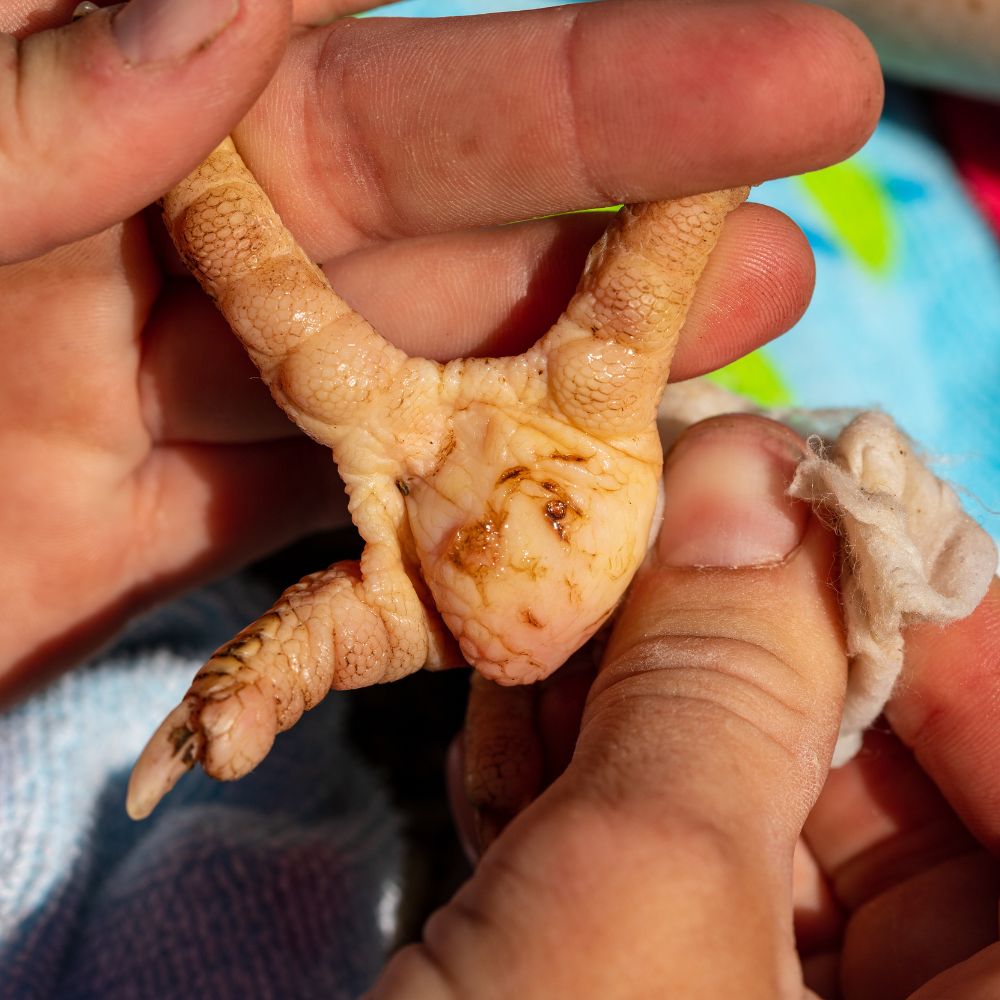
Why does Bumblefoot happen?
Typically bumblefoot happens to a flock member due to a Staphylococcus infection. This bacteria issue could be due to getting a small (or large) cut or abrasion, getting something stuck in their foot like a splinter, piece of straw or hay, from chicken wire, or even roosting bars (don’t think this means you should get rid of your roosting bars, however.)
In rare cases, it also might be indicative of a vitamin A deficiency, especially if your chickens aren’t getting a balanced diet (you can give them a multivitamin if you’re worried).
Bumblefoot Prevention
It can be hard to prevent bumblefoot because your chickens are walking outside without socka and shoes. By default, they’re more susceptible to infections and cuts on their feet.
However, making sure your chickens have a good diet and their bedding is adequate is a place to start. Eliminating sharp rocks or anything else that can cut them is another strategy but can be challenging depending on your situation.
How to Treat Bumblefoot
Medical Care
According to the Merck Veterinary Manual, a chicken with bumblefoot likely has a staph infection (staphylococcus aureus)and:
“Staphylococcosis can be successfully treated with antibiotics such as penicillin, erythromycin, lincomycin, and spectinomycin.”
If you think your chickens might have bumblefoot, you should consult a veterinarian. They can give you dosage advice (even if they don’t know, they have a network of vets they can call for advice) and let you know if your chickens need some sort of treatment more extreme than medicine.
Many times, we’ve taken animals with some mysterious illness to the clinic, and the vet has been able to call another vet he knew from school or met at a convention and got treatment advice in minutes.
Natural Options
There are some natural options for Bumblefoot, if you want to avoid pharmaceuticals, such as essential oils, honey, or green clay.
Essential Oils
I like using Young Living’s Animal Scents ointment, which promotes healthy skin.
If you use oils, you should always dilute it with a carrier oil such as almond or coconut oil. For more details about using essential oils on your chickens, check this out: Using Essential Oils To Raise Healthy Chickens
Honey
Honey is another option because it has excellent and well-documented antibacterial properties (it’s used to treat burns and keep them from getting infected.)
Green Clay
You don’t hear much about green clay in the backyard chicken community. However, it’s a popular remedy for treating bumblefoot with parrot and parakeet owners. (It’s not just chickens that get bumblefoot).
Keeping it wrapped
If your chicken has bumblefoot you’ll want to keep the foot pad wrapped with a gauze pad if you can manage it. This will help keep dirt, sand, and additional bacteria out of the infected area. But first, be sure to clean the foot with mild soap and warm water.
You’ll also want to keep your hen or rooster in a place where you can observe it. In the case of a small wound, and if your chicken isn’t very uncomfortable, you can let your chickens continue to wander around.
If it’s bad enough, the lump on your chicken’s foot might need to be opened up to drain. You would need a scalpel, antibacterial spray, bandages, or vet wrap. After draining it, you should soak it in Epsom salts, and then dress the wound. If you aren’t comfortable with draining it, you might try soaking it in the Epsom salts and wrapping it and see how it does before seeking medical care.
Should you do surgery to get rid of bumblefoot?
You might see advice online that if your chickens have bumblefoot, you should perform surgery to excise the infection. You should bear in mind that this advice calls for you to perform surgery without anesthetic in your own home.
There are times when the wound will need to be drained and dead tissue cut out. However, I think it’s irresponsible to tell owners of backyard chickens that this type of surgery is necessary and to perform it themselves.
If you read the Merck Veterinary Manual, their first course of treatment is not surgery. Therefore, it shouldn’t be your first choice. Except in cases where a vet has advised you the infection needs to be drained.
Particularly if you’ve never done this type of surgery before, it’s advised to get the help of your local vet.
Even if you don’t have an avian vet in your area, a regular vet can still help. They will have experience with minor surgeries and can help your chickens be more comfortable. They’ll also give advice for follow-up treatment.
Summary
Chicken issues can worry even the most seasoned backyard chicken keepers, so know you aren’t alone. Mild cases of Bumblefoot can be easily treated. Severe cases of Bumblefoot might need more attention.
Bumblefoot doesn’t have to be life-threatening, or even greatly inconvenience your backyard chickens. Just remember that it’s an infection, and treat it like one. Above all, if you’re not sure what to do, seek the advice of your local vet.
Maat van Uitert is a backyard chicken and sustainable living expert. She is also the author of Chickens: Naturally Raising A Sustainable Flock, which was a best seller in it’s Amazon category. Maat has been featured on NBC, CBS, AOL Finance, Community Chickens, the Huffington Post, Chickens magazine, Backyard Poultry, and Countryside Magazine. She lives on her farm in Southeast Missouri with her husband, two children, and about a million chickens and ducks. You can follow Maat on Facebook here and Instagram here.

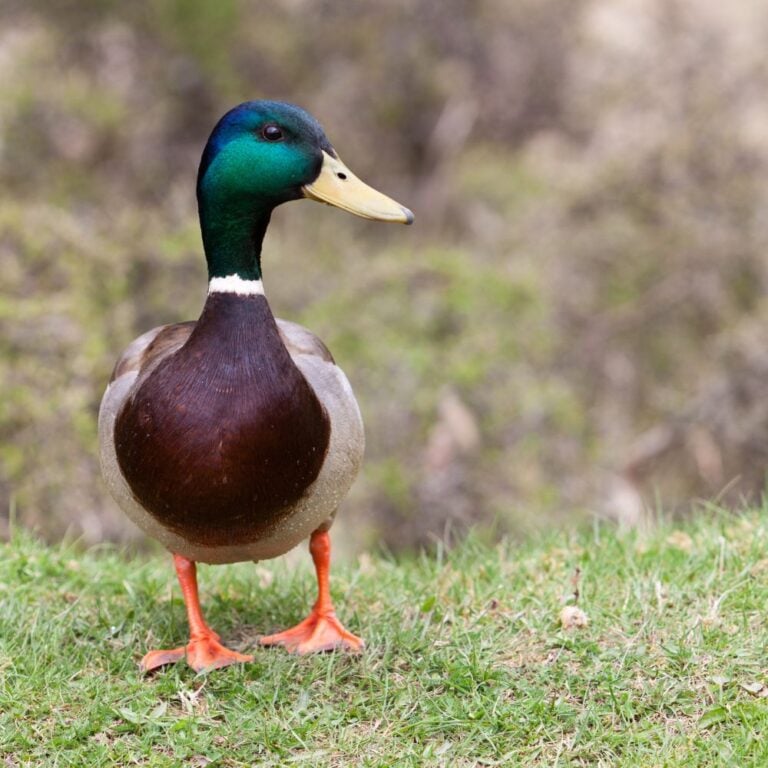
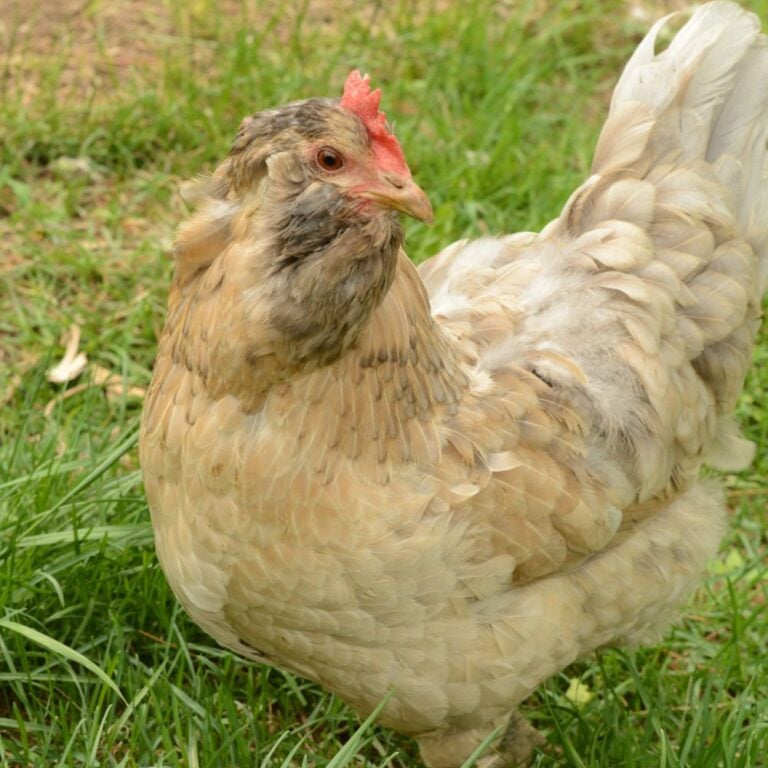
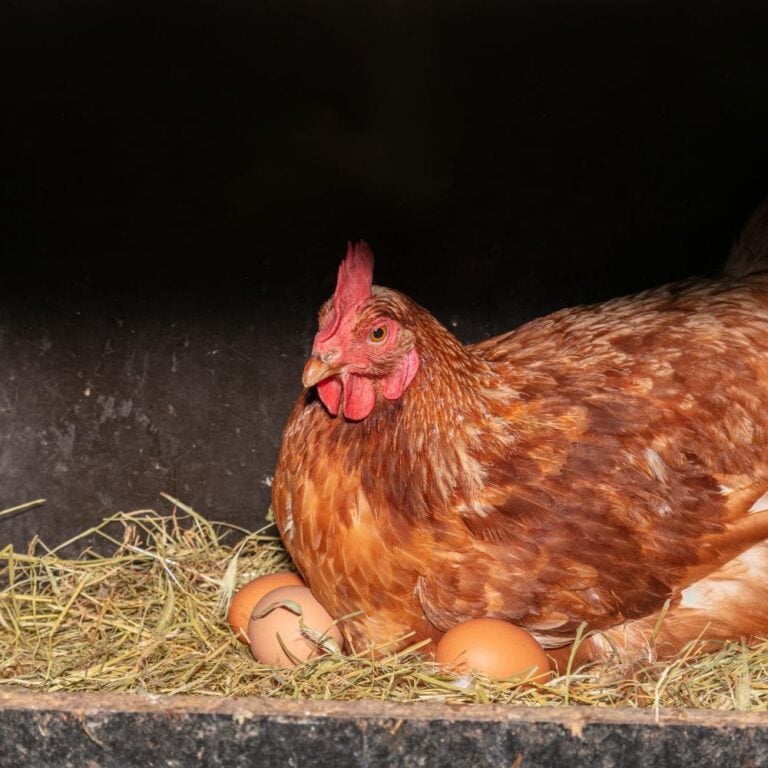
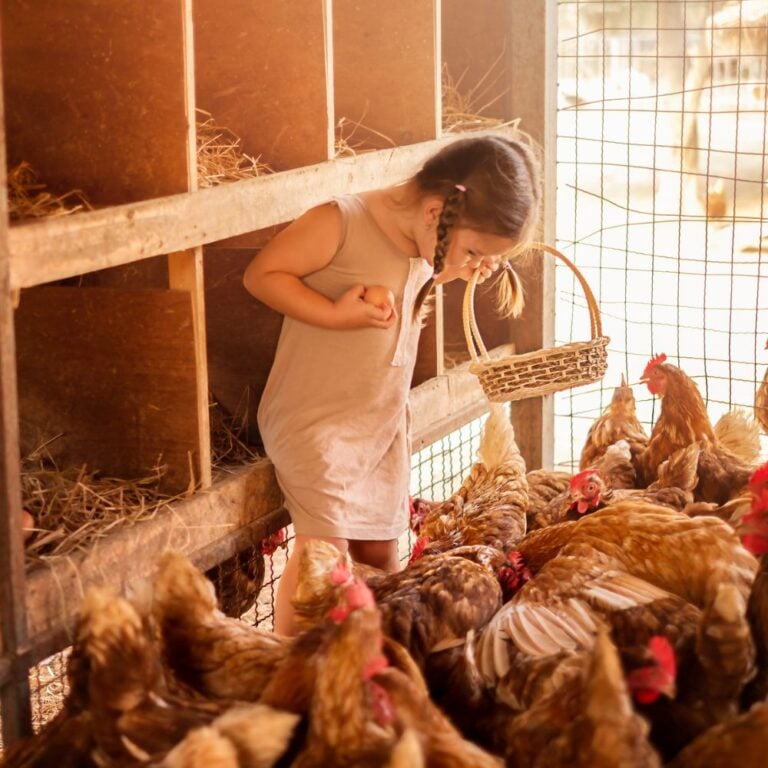
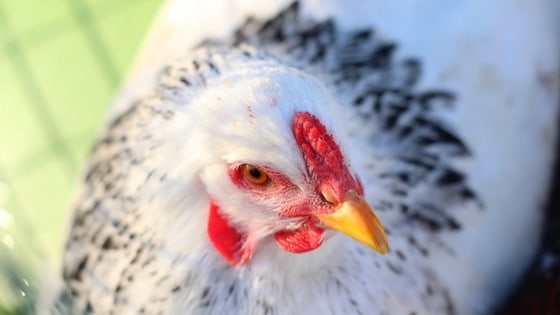
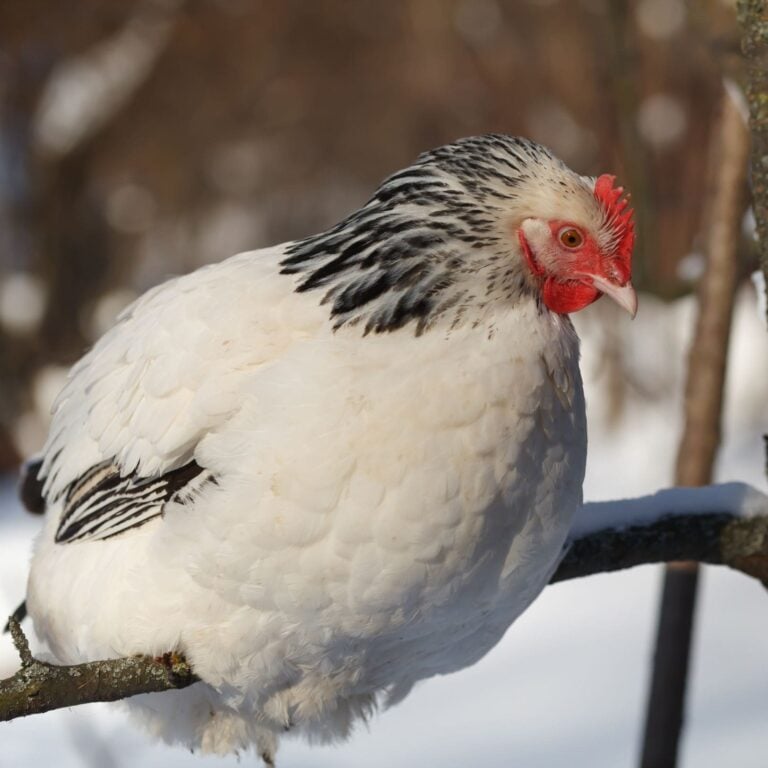
HI! I love your posts. They are always very informative!! Do you have photo’s of Bumblefoot vs. Scaly Leg mites? I have a hen who’s ankles are swollen so I don’t believe the issue is Bumblefoot and she has no sign of mites either. She acts perfectly normal, eats well, lays eggs for us, her eyes are clear and bright, she roosts up high every night, but I can not figure out what on earth is going on with her feet.
Can you email a photo? It’s hard to see mites in cases of scaly leg mites. You can tell if the scales start to lift and peel off. Is it cold in your area? Frost bite (the beginning of frost bite) is another option but it’s hard to know without seeing the hen.
Thank you for this great article. I’ve seen and read too many people telling others that’s the Bumblefoot has to be cut out. My rooster has a small spot but it wasn’t bothering him so I’ve left it alone and just kept tabs. That was my intuition and common sense! I’ve seen drawing salve and wondered if it works as proclaimed. Seems like it might. What do you think?
You can try it and see how it does for your guy. There’s an article on this website about how to make it, if you don’t have any on hand. Oregano essential oil is another option to promote healthy skin on the foot. Whichever you use, I would definitely wrap the foot.
I believe in using bag balm utter salve for all infections it works great put on area bandage and change it two to three times it draws out the infection.?
Thank you so much for your time you spend teaching us so much about our precious fluffy butts.